The Harding Icefield Trail rises above the Exit Glacier valley floor to the height of 3,500 feet. That may not seem high to some folks, but it is a steep hike when you start at 500 feet and climb 3,000 feet in 4.1 miles! That said, many people do make the hike. It is a popular route because of the magnificent view of the Harding Icefield at the end of the trail. Last summer approximately 17,000 hikers made their way up the trail in an attempt to make it to the top and, with large numbers of people, there are often impacts to soil and vegetation around trails.
For this reason, the vegetation crew and I have been conducting impact monitoring on the Harding Icefield Trail this week. We brought along data sheets, a measuring tape, photos of last year's impacts, a camera, and a GPS unit. These are the tools we need to evaluate old and new impacts we discover as we hike. They are also used to do some detective work along the trail. We are looking for places where vegetation has been trampled or where hikers have created what we call 'social trails', unofficial trails created by hikers walking off the established trail. When we find trampled vegetation, the first thing we do is decide what level of impact it is, one, two, or three, three being highest. If it is a previously recorded site, we compare what the site looks like today with what it looked like in the photo from the previous years.
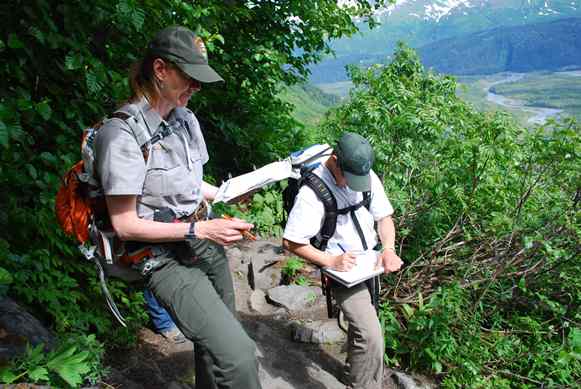
Conducting Harding Icefield Trail Impact Monitoring. Photo: NPS/Paige Calamari
We answer the question, is it staying the same, improving or getting worse? Next is where the detective work comes in. We try to determine what is causing hikers to walk off trail and trample vegetation. There are a number of reasons hikers leave the trail. They may be avoiding mud on the trail when it is rainy, they may be trying to access a point where they have a nice view, they may be avoiding rocky or steep sections of trail, or they may be looking for a place to rest.
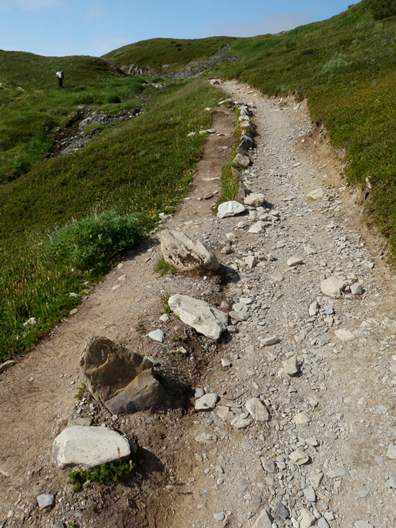
Impacts caused by hikers walking next to the established trail on the right to avoid a rocky uneven tread. Photo: NPS
Lastly, we look for solutions to the problem. What can we do to keep hikers walking on the trail in these impacted areas? This is where hiker psychology comes in. We have to think like a visitor hiking the trail and come up with strategies that will keep them from hiking off trail. Educating visitors is a great way to keep them walking on the trail. We use signs to remind hikers to stay on the trail and that hiking off trail can damage vegetation and soils that can take years to reestablish.
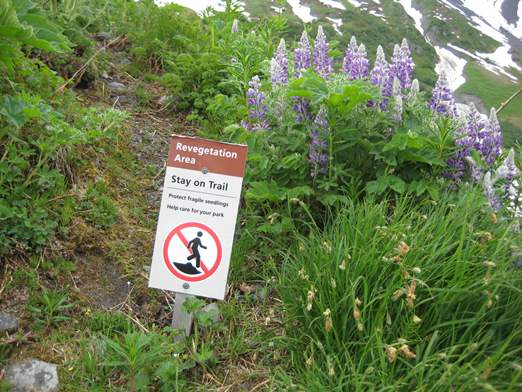
Photo: NPS
Many hikers don't even notice that they are walking off the trail to avoid mud or rocky sections. By improving the drainage on the trail or making steps that are easy for hikers to navigate, visitors will hike on the trail because it is the most pleasant place to walk. When these other types of strategies don't keep hikers on the trail, we can also put up a barrier, such as large rocks, fencing or rope, to keep people from trampling an area and giving vegetation a chance to grow back.
Completing this survey each year lets us find trampled vegetation while the area is still small so that we can try to address it before it becomes a bigger problem, saving time and resources.
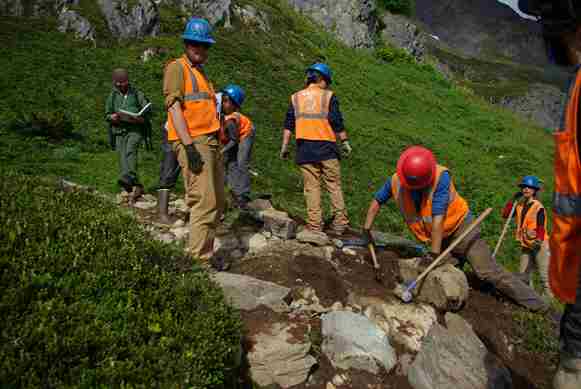
Southeast Alaska Guidance Association (SAGA) trail crew doing trail work. Photo: NPS
Taking the time to look closely at the Harding Icefield Trail makes me appreciate all the work that has been done here by many different trail crews over the years to give us access to the amazing views along the way.
You can help prevent impacts by staying on the trail and resting or stopping on hard surfaces, like rocks or gravel, or using established rest stops. If the trail is muddy or wet be prepared to hike through it. Avoid cutting switchbacks or taking shortcuts off trail. If one person hikes off trail it may not be a big deal, but when 17,000 visitors hike off the trail it can cause a lot of damage.
Enjoy your hike on the Harding Icefield Trail and help us keep the views along the trail unimpaired by human footprints.
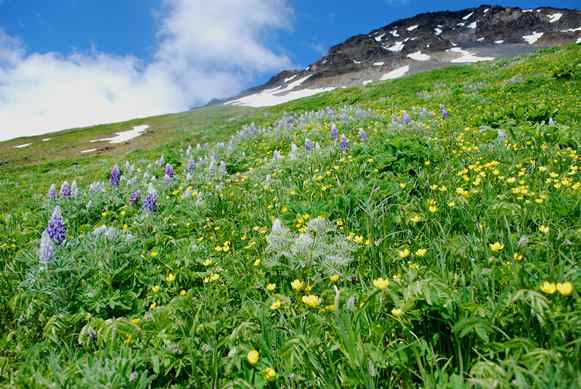
Photo: NPS \ Paige Calamari
